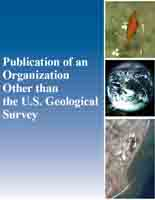Testing tree-ring cellulose δ18O with water isotopes for Holocene lake δ18O interpretations in the central Rocky Mountains USA
Links
- More information: Publisher Index Page (via DOI)
- Download citation as: RIS | Dublin Core
Abstract
Stable isotopes of water preserved in geologic archives, primarily as oxygen (δ18O), have proven critical for documenting Earth’s climatic and hydrologic
systems past and present. However, timescale differences of water isotope inputs to proxy systems and the signal embedded in long paleorecords often
confound translation to observed hydroclimatic metrics. Here, a unique 20-year dataset of meteorology, hydrology, and the isotopic composition of
weekly meteoric and surface water samples (δ18O, δ2 H) are combined with paleoclimate δ18O data from tree-ring cellulose and lake carbonate to better
understand proxy signals of Upper Colorado river basin drought. Annual tree-ring cellulose δ18O from Picea engelmannii growing within a glacier-fed creek
and a spring discharge area were used to derive annual source water δ18O using a cellulose source-water isotope model. Comparisons with the monitoring
record indicates that tree-ring cellulose δ18O tracks variations in wet and dry hydroclimatic extremes. Source water isotopes are shown to reflect the
hydroclimate of the current year and some number of previous years as an effective moisture-discharge proxy rather than a precipitation isotope proxy.
Results contextualize Holocene lake carbonate δ18O data. The contemporary-to-paleo comparison identifies changes in seasonal precipitation extremes
during recent millennia and several earlier arid and monsoon-dominated Holocene periods that exceed the arid maximum of the calibration period.
Study Area
| Publication type | Article |
|---|---|
| Publication Subtype | Journal Article |
| Title | Testing tree-ring cellulose δ18O with water isotopes for Holocene lake δ18O interpretations in the central Rocky Mountains USA |
| Series title | The Holocene |
| DOI | 10.1177/09596836241286007 |
| Edition | Online First |
| Publication Date | October 23, 2024 |
| Year Published | 2024 |
| Language | English |
| Publisher | Sage |
| Contributing office(s) | Geosciences and Environmental Change Science Center |
| Country | United States |
| State | Colorado |
| Other Geospatial | Rocky Mountain National Park, White River Plateau |


